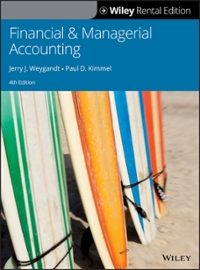Accounintg Information System Design
Fast Buck Lizzie's Produce Fast Buck Lizzie's Produce (FBLP) is a family-owned chain of produce stores. It has expanded from its humble beginnings in upstate New York, to a $30,000,000 business with stores throughout the United States. FBLP provides customers with over 50 types of fresh produce. This expansion has progressed relatively smoothly, but Lizzie is getting older and crankier, and she does not want to spend 15 hours each day managing the businesses. Unfortunately, her three children don't have his strong work ethic, and she fears they won't even put in 15 hours each week. In order to head off disaster, Lizzie has tried to convince his children that an integrated information system may make their work more efficient. You have been hired to help them develop the project. Your first few days with Lizzie have been valuable. You have interviewed Lizzie and many of the employees who have years of experience and many good ideas. You have summarized the results of these conversations as follows: Each store can carry all types of produce, but they usually specialize in local favorites. Produce is purchased directly from local and regional farmers and then are priced based on seasonal demand conditions. All stores are very successful. Customers (usually small restaurants) are allowed to buy on credit, and all pay on the last day of the month. There are no bad debts because no one wants to deal with Lizzie's crankiness. Normal business proceeds as follows. An employee decides approximately how much produce is needed each day to service "his/her" customers. They purchase that amount in the early morning, rinse all of it, and deliver it by 3:00 p.m. This minimizes the on-hand inventory of produce from day to day. Each farmer supplies produce to only the local store; produce is never transported between locations. Employees always use company trucks to visit farmers and customers Lizzie handles all of the hiring at each store. She strives to select generalists who can perform many functions such as purchasing, selling, and preparing produce. These employees earn a wage based on their hourly rate and the number of hours worked. The hours worked are recorded on weekly time cards which are identified by Time Card Numbers which are unique throughout the company. When employees sum their hours at the end of the week, they also note the % of their hours dedicated to preparing produce. Although employees are usually assigned to a particular store, they may be transferred to another if Lizzie sees a need. FBLP also utilizes a fleet of trucks. Painted with a farm themed logo, they are used to bring the produce from the farms to the store and to deliver the produce to customers such as restaurants. The use of a particular truck on a purchase or sale is tracked, as is the time of the employee/driver. Each truck is uniquely numbered and assigned to a store, but trucks may be transferred between the stores. Company trucks are leased on yearly contracts from truck vendors. Each contract supplies one truck for one year on a negotiated fee. Lease payments against each contract are made monthly by Lizzie who will send a truck vendor just one check to cover all existing contracts with that supplier. Lizzie uses five checking accounts for all of his disbursements and receipts. As a result, these accounts are used to pay farmers for their produce and each employee for his/her service. One check (unique number) is cut for each purchase submitted properly (it will have a unique purchase invoice number) and each time card. Customer payments are assigned a unique remittance advice number and they are deposited in just oneaccount. You may assume that only Lizzie has access to the cash accounts, therefore she is always the person who acts for the company on cash transactions. You may also assume that Lizzie is the agent for the company on the acquisition of employee service and the lease of trucks. Do not model Lizzie as an employee or as a separate entity in this problem. (This means that some events will not have a modeled inside agent.) You have also kept a list of data elements that you want to include in Lizzie's system. They are as follows: Location Code # $ amount of sale dollar amount of purchase Employee Soc. Sec. No. (SS#) Employee Name Farmer Name Quantity of each produce item purchased cash account location Quantity of each produce item sold Store telephone no. Wage rate Customer name Bank account no. Truck mileage for this sale Farmer quality score Truck mileage for purchase of produce Time spent (in minutes) of purchasing employee produce description Customer credit score Driver time for sale Check # $ amount of cust. remittance Time card # Lease interest rate Vendor payment terms Purchase invoice # Check amount in dollars Total QOH of each item % of time rinsing produce for this period -- employee Remittance advice # (RA#) Total hrs worked this period, employee Customer # Location quantity of each quantity item Sales invoice # Item selling price (standard across US) Truck engine # Date of sale Produce ID # Date of purchase Vendor Lease# Lease fee Truck model year Vendor phone # Farmer# Lease monthly payment Store address Vendor name 1. Develop an UML diagram for Fast Buck Lizzy's Produce. 2. Create tables for your model. 3. In determining minimum cardinalities, you may assume that agents and resources are entered into the database before any relationships with other entities are established








